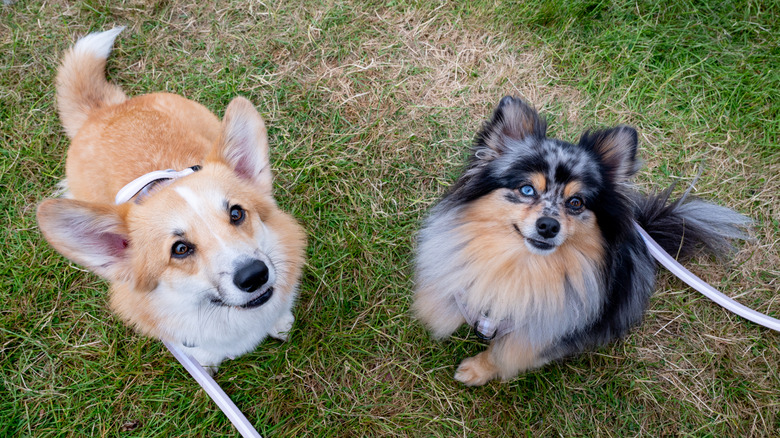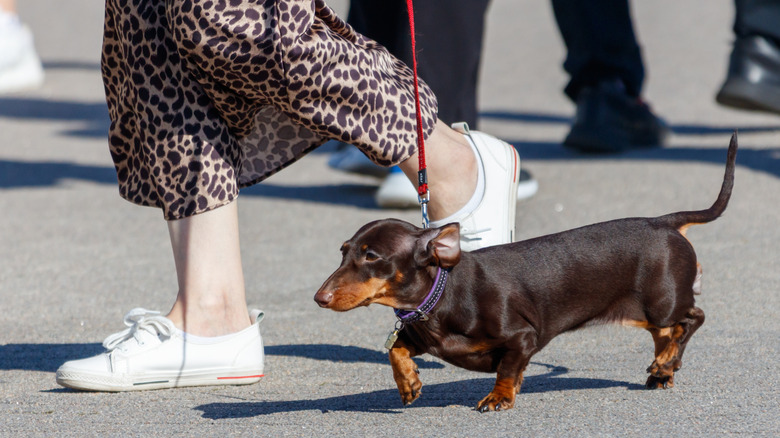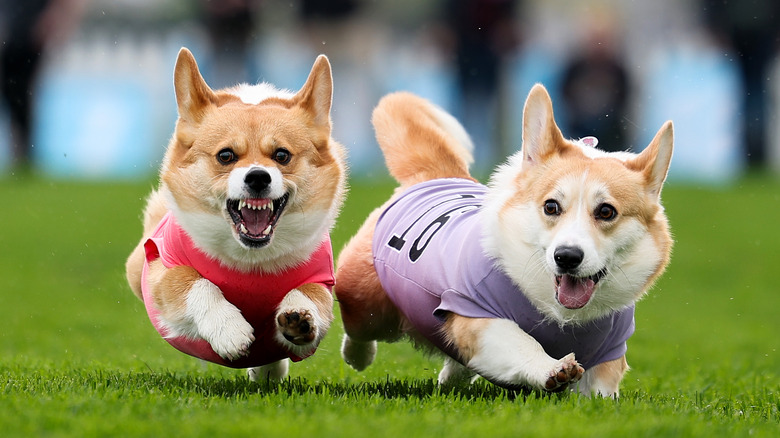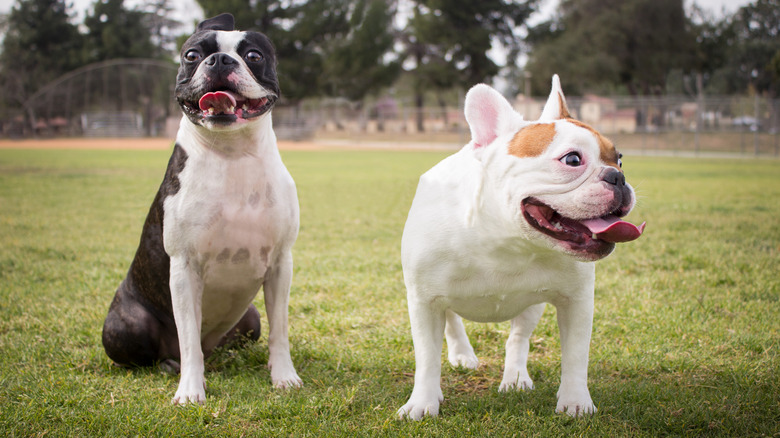Crucial Ways A Dog With Dwarfism Is Different From A Small Breed
Dogs are like humans in many ways, even genetically. In fact, we share about 84% of their DNA. Another lesser-known similarity is that canines can experience some of the same genetic mutations as humans, including dwarfism. Canine dwarfism is a hereditary condition caused by genetic mutations that result in disproportionate body size, unusually short stature, and short, thick legs. Some people mistake certain small breeds for dogs with dwarfism, but there are some key differences between the two: their body proportionality, risk of certain health issues, and genetic makeup.
You've likely seen a dog with dwarfism, either in person or in a photo, perhaps without realizing it. Pembroke Welsh corgis, dachshunds, and basset hounds are among the breeds with the condition, hence their adorably stubby legs. French bulldogs and bulldogs also fit into this category. Some small dogs like pugs and Pomeranians may appear to have dwarfism, but the mutation is not a universal trait of either breed. While any dog can be born with dwarfism, there are distinct differences between a standard small dog and a breed with dwarfism.
A dog with dwarfism has body disproportions
A dog with dwarfism differs from a standard small breed in the proportion of its body structure. For example, a dachshund has a long body that measures about 23 inches long when fully grown, but its withers height is only about 8 or 9 inches. The withers is the measurement between the highest point of an animal's shoulder blades to the ground.
The beagle, in comparison, also measures about 23 inches long, but has a withers height of 13-16 inches. This means the legs of this small breed are several inches taller than the dachshund, even though their bodies are about the same length. Both breeds can also weigh about the same, but only the beagle's legs are proportionate to its body size; the dachshund's legs appear a bit too short for its long body.
The Pomeranian, another small breed, weighs only about 5 pounds and stands about 9 inches tall, making it one of the smallest dogs in the world. To some, the fluffy fur creates the illusion of a body that's larger than it actually is, and legs that are shorter than they truly are. However, this dog's legs are actually proportional to its body size. A Pembroke Welsh corgi, in comparison, stands almost twice as tall as a Pomeranian, but its withers height measures only a few inches taller. The corgi has disproportionately short legs relative to their body size, due to its dwarfism.
Dogs with dwarfism have an increased risk of certain health issues
Another difference between these two canine groups involve their health. Unfortunately, despite being desired breeds that are often intentionally bred to have these body disproportions, dogs with dwarfism carry an increased risk for various health issues, compared to small breeds without it. These issues occur all throughout the body, from the mouth to the skin to the legs.
Some of the most common health problems that dogs with dwarfism — specifically pituitary dwarfism — experience include alopecia (patchy hair loss), hip dysplasia, luxating patella, and eye problems. This is due to their growth hormone deficiency. With achondroplasia dwarfism, which is the most common type, a dog might experience spinal problems, intervertebral disc disease, hemivertebrae, and other conditions. This type of dwarfism affects an entire breed while the pituitary type does not.
While it's true that certain small dog breeds may also be at risk for different health problems, these issues aren't related to body disproportions or a genetic mutation. Plus, some of these conditions can be prevented, but for dogs with dwarfism, the risk stems primarily from their skeletal structure and DNA, not their lifestyle.
The genetic makeup of a dog with dwarfism differs from that of small breeds
Genetic makeup is a third area where dogs with dwarfism differ from small breeds. Analyzing the DNA of a dog reveals a lot more than its breed. In dogs with dwarfism, it reveals the genetic mutation responsible for the condition. What many people don't realize, though, is that just as there's a gene for dwarfism, there's one that stunts the growth in small breeds as well. However, it's not a mutation. Scientific American shared that "small breeds...all have a piece of DNA that seems to repress the IGF1 (growth hormone) gene and hence stunts their growth," based on samples from thousands of dogs from dozens of breeds.
Dwarfism, in comparison, is caused by a mutation in the gene for the receptor responsible for bone growth and development. So although dogs with dwarfism, such as French bulldogs, may be of a similar size and appearance as small breeds like the Boston terrier, only one breed has a genetic mutation for dwarfism: the Frenchie. Interested in learning more about how these two breeds compare and contrast? Check out French Bulldogs vs. Boston Terriers: How Do They Differ?



